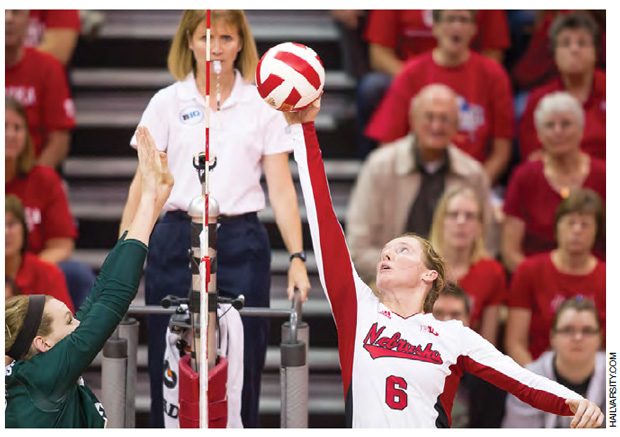| The Art of Strategy and Tactics in Volleyball |
| By: Terry Pettit
Originally Published in: Coaching Volleyball - Provided by: AVCA
When I was coaching women's volleyball at the University of Nebraska I had a strategy that was the foundation of every game plan that I developed. My strategy was simple but not easy: We will do what we can to make the opponent uncomfortable, not just physically but mentally. Tactics were the decisions and behaviors we trained to implement our strategy. Tactics are not arbitrary. A coach has to know his own team's strengths and weaknesses before he can begin to develop a game plan. For example, the opponent may be weak at defending a slide attack behind the setter, but if we do not pass or ball handle well enough so that our setter is in position to set a fast tempo to a slide attacker, than we need to consider other tactical options. An opponent may have a rotation that is particularly vulnerable to a short serve inzone 2, but unless all of our servers have the ability to serve short on command we are dependent on the right matchup. In order to take advantage of an opponent's weaknesses, there were specific areas of the game that we had to become very consistent in so that we would have opportunities to exploit an opponent, even when we didn't get the ideal matchup. Some of following examples are applicable to any level of volleyball. Some require size and athleticism that may not be an option for younger teams. 1 Serving: Every server was trained to 1 serve deep to seams as well as short to zones 2, 3 and 4. The key to developing this fundamental was that the arm speed in a float serve was the same when serving deep or shallow. The amount of hip and shoulder rotation determined the depth of the serve. 2 The players who were not part of the regular rotation had to have a forcing serve. Some were jump servers, some served from twenty feet behind the end line; some of them developed look-away serves that would surprise a receiver. We would never substitute to someone who would just keep the ball in play with her serve. 3 Blocking was a priority. Even our setters were very good blockers. Not all of them were tall – Lori Endicott, who set in the Barcelona and Atlanta Olympics, was only 5' 9" but she had strong hands, was always balanced and rarely got used. Having setters who are fundamentally sound blocking gives a coach the freedom to consider other factors when matching up with an opponent. A minimum of 20-30 minutes a day would be spent on blocking footwork and technique. 4 Teams that block and serve well create a third dimension. Tough serving allows a good blocking team to become a great blocking team. Volleyball is a game of runs, which are usually created by nudging the opponent toward unforced errors. While kills may be impressive, they do not demoralize an opponent nearly as much as aggressive serving and blocking. 5 Every scouting report should include information on which player(s) on the opponent's team are the most vulnerable to breaking down and how we can bring that about. Sometimes it may take three or four sets before we can impose our strategy. Sometimes we will wait until after the second set before implementing a specific tactic so that a coach will not have much time to explain an adjustment. Our players have a clear understanding that against a talented opponent we are going to have to be patient and win the battle mentally before we begin to see the results physically with unforced errors on the other side of the net. 6 Base position is the most important position on defense. We may have two or three different base and release positions depending upon the strengths of a specific rotation. This can't be learned through talking or just playing. It has to be learned on the court with hundreds of repetitions each day. Players need to be able to adjust their base as a match evolves and patterns emerge. 7 Every coach solves problems in different ways. Some substitute liberally; some will have a specific pattern to get out of a weak rotation; some will train a setter to be an aggressive attacker when a team begins to founder; some have a player who gets subbed out when the crap hits the fan, even when she isn't the problem. If I know how a coach deals with adversity it gives me the opportunity to prepare my team for the adjustment he is likely to make. It doesn't guarantee that we will always be successful but it gives us the opportunity to be prepared. 8 How we use our setter to be an attacker is a tactical decision. If our setter can get us timely kills, that is important, but what may be even more important is when a setter attacks but doesn't get a kill. Think of this like a pitcher in baseball throwing a hard inside fastball that moves the hitter off the plate. When there are only two attackers in the front row, if the setter is not an offensive threat it allows the opponent to commit the middle attacker much earlier. 9 Liberos can only serve for one player; therefore on most teams there is a weaker defender in the back row in one rotation. Where is she? Where is she vulnerable? Do we take advantage of that early or do we wait for a critical point later in the match? With every tactical decision that we make, a coach has to believe that we are more comfortable (trained) in making the adjustment than our opponents will be. Terry Pettit, author of A Fresh Season, at www.terrypettit.com |







